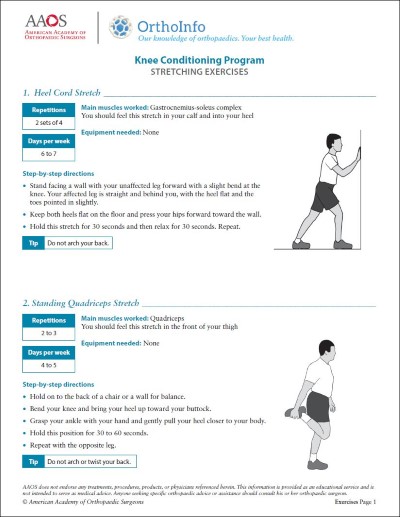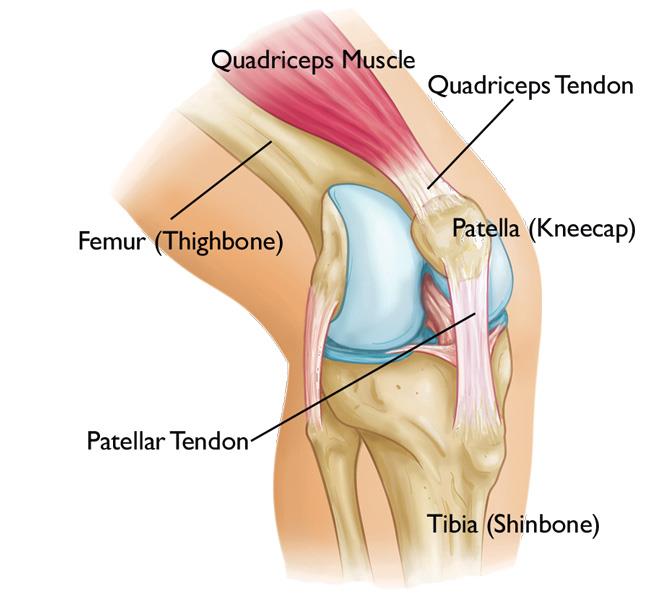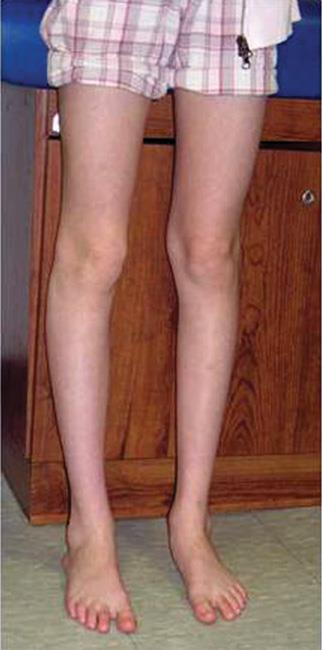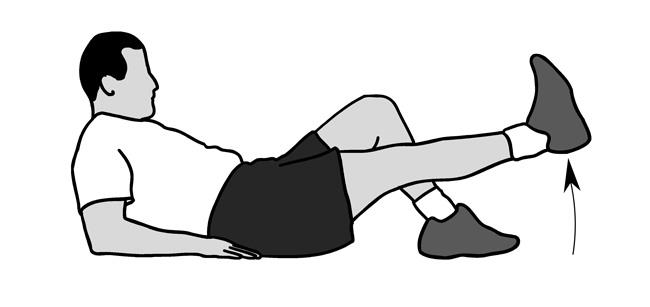Diseases & Conditions
Adolescent Anterior Knee Pain
This article addresses pain in the front and center of the knee. Pain located in the upper shinbone area, just below the kneecap, is a different condition and is discussed in Osgood-Schlatter Disease (Knee Pain).
A teenager or young adult who is physically active and participates in sports may sometimes experience pain in the front and center of the knee, usually underneath the kneecap (patella). This condition — called adolescent anterior knee pain — commonly occurs in many healthy young athletes, especially girls.
Adolescent anterior knee pain is not usually caused by a physical abnormality (defect) in the knee, but by overuse or a training routine that does not include enough stretching or strengthening exercises. In most cases, simple measures like rest, over-the-counter medication, and strengthening exercises will relieve anterior knee pain and allow the young athlete to return to their favorite sports.
Anatomy
The knee is the largest and strongest joint in your body. It is made up of the lower end of the femur (thighbone), the upper end of the tibia (shinbone), and the patella (kneecap). The ends of the three bones that form the knee joint are covered with articular cartilage, a smooth slippery substance that protects and cushions the bones as you bend and straighten your knee.
Bones are connected to other bones by ligaments. There are four primary ligaments in your knee. They act like strong ropes to hold the bones together and keep your knee stable.
Muscles are connected to bones by tendons. The quadriceps tendon connects the muscles in the front of the thigh to the kneecap. Stretching from your kneecap to your shinbone is the patellar tendon.
Causes
In many cases, the true cause of anterior knee pain may not be clear. The complex anatomy of the knee joint, which allows it to bend while supporting heavy loads, is extremely sensitive to:
- Small problems with alignment
- Activity
- Training
- Overuse
For example, weakness in the quadriceps muscles at the front of the thigh may lead to anterior knee pain. When the knee bends and straightens, the quadriceps muscles help to keep the kneecap within a groove at the end of the femur. Weak quadriceps can cause poor tracking of the kneecap within the groove. This can place extra stress on tendons (potentially leading to tendinitis) or irritate the cartilage lining on the underside of the kneecap (chondromalacia patella).
There are other factors that may contribute to adolescent anterior knee pain:
- Imbalance of thigh muscles (quadriceps and hamstrings) that support the knee joint
- Tight quadriceps and hamstring muscles
- Problems with alignment of the legs between the hips and the ankles
- Using improper sports training techniques or equipment
- Changes in footwear or playing surface
- Overdoing sports activities, or changes in the type of training
- Starting a new sport and/or ramping up physical activity too quickly
Symptoms
The most common symptom of anterior knee pain is a dull, achy pain that begins gradually and is often related to activity. Other common symptoms include:
- Popping or crackling sounds in the knee when you climb stairs or stand up and walk after prolonged sitting
- Pain at night
- Pain during activities that repeatedly bend the knee (jumping, squatting, running, and other exercise involving weight-lifting)
- Pain related to a change in activity level or intensity, playing surface, or equipment
Adolescent anterior knee pain syndrome does not usually cause swelling around the knee. Symptoms like clicking, locking, snapping, or the knee giving way are also uncommon. These symptoms suggest a mechanical problem in the knee and are reasons to see your doctor.
Doctor Examination
If your knee pain does not go away and interferes with activity, visit your doctor.
Physical Examination
Your doctor will:
- Examine your knee to determine the cause of pain behind your kneecap and rule out other problems
- Possibly ask you to stand, walk, jump, squat, sit, and lie down
During the physical examination, your doctor will also check:
- Alignment of the lower leg and the position of the kneecap
- Knee stability, hip rotation, and range of motion of knees and hips
- The kneecap for signs of tenderness
- The attachment of thigh muscles to the kneecap
- Strength, flexibility, firmness, tone, and circumference of front thigh muscles (quadriceps) and the back thigh muscles (hamstrings)
- Tightness of the heel cord and flexibility of the feet
Tests
X-rays. Plain X-rays provide detailed pictures of dense structures, like bone. Special X-ray views will help your doctor see if there are any problems in the shape or position of the kneecap. Your doctor may X-ray both of your legs to look for differences between them.
Magnetic resonance imaging (MRI) scans. MRI scans create better images than X-rays of the soft tissues (e.g., ligaments, tendons, and muscles) around your knee. Unless you are suffering from symptoms like locking or catching of the knee, an MRI is not usually ordered during the initial evaluation and work-up of anterior knee pain.
However, if your symptoms do not go away on their own or improve with treatment, your doctor may order an MRI at a follow-up visit to see if there is an internal problem within the knee joint, such as damage to the cartilage or ligaments.
Treatment
There are simple changes you can make to help relieve anterior knee pain.
Activity Changes
- Stop doing the activities that make your knee hurt until the pain is completely gone. This probably means changing your training routine. Switching to low-impact activities during this time will put less stress on your knee joint. Biking, swimming, and yoga are good low-impact options. Once the pain is gone, resume running and other higher impact sports activities gradually.
- If you are overweight, losing weight will also help to reduce pressure on your knee.
- Your knee pain may be related to your exercise technique. A trainer at school may be able to help you evaluate and improve upon your technique, such as how you land from a jump or push off from the starting block.
- Your knee pain can be due to an imbalance of thigh muscles due to repeating the same activity or training exercise over and over. This means one of the muscles is stronger than the others. Your doctor or trainer may recommend cross-training to improve strength in the weaker muscle (typically the quadriceps or hamstrings).
- Your knee pain may also be due to tight muscles, and the treatment may be as simple as introducing stretches into your routine.
Physical Therapy Exercises
Specific exercises will help you improve range of motion, strength, and endurance. It is especially important to focus on stretching and strengthening your quadriceps as these muscles are the main stabilizers of your kneecap.
Your doctor may provide you with exercises or may recommend you visit a physical therapist who can develop an exercise program to improve your thigh muscle flexibility and strength.
It is very important to stick with the therapeutic exercise program for as long as your doctor or physical therapist prescribes. Typically, these exercises do not end when the course of physical therapy ends and should be added into your exercise routine long-term. Anterior knee pain can return.
Ice
Applying ice after physical activity may relieve some discomfort. Do not apply ice directly to the skin. Use an ice pack or wrap a towel around the ice or a package of frozen vegetables. Apply ice for about 20 minutes at a time.
Orthotics and Footwear
Your doctor may recommend shoe inserts. Soft-, firm- and hard-molded arch supports can help prevent the foot from overpronating (when the arches of your feet flatten more than they should) and relieve pain and fatigue. Different types of arch supports can be purchased at your local drugstore.
Be sure that your athletic shoes provide the correct support for your activities. and are the correct size. Also, make sure to replace your athletic shoes when they get worn-out or damaged. Learn more: Athletic Shoes
Nonsteroidal Anti-inflammatory Drugs (NSAIDs)
Over-the-counter medications such as ibuprofen and naproxen may help to relieve your pain. Always take these medicines with some food to avoid the potential side effect of stomach upset. If NSAIDs do not provide relief from the discomfort, consult your doctor for a more thorough evaluation.
Recovery
Adolescent anterior knee pain is usually fully relieved with simple measures. It may come back, however, if you do not change your training routine or activity level. It is essential to maintain appropriate conditioning of the muscles around the knee, especially the quadriceps and hamstrings.
There are additional steps you can take to prevent anterior knee pain from coming back. They include:
- Wearing shoes appropriate to your activities
- Warming up thoroughly before physical activity
- Making stretching part of your warm-up routine, and stretching after physical activity
- Reducing any activity that has hurt your knees in the past
- Limiting the total number of miles you run in training and competition
- Cross-training to avoid overuse of one muscle group or joint
Last Reviewed
June 2023
AAOS does not endorse any treatments, procedures, products, or physicians referenced herein. This information is provided as an educational service and is not intended to serve as medical advice. Anyone seeking specific orthopaedic advice or assistance should consult his or her orthopaedic surgeon, or locate one in your area through the AAOS Find an Orthopaedist program on this website.










